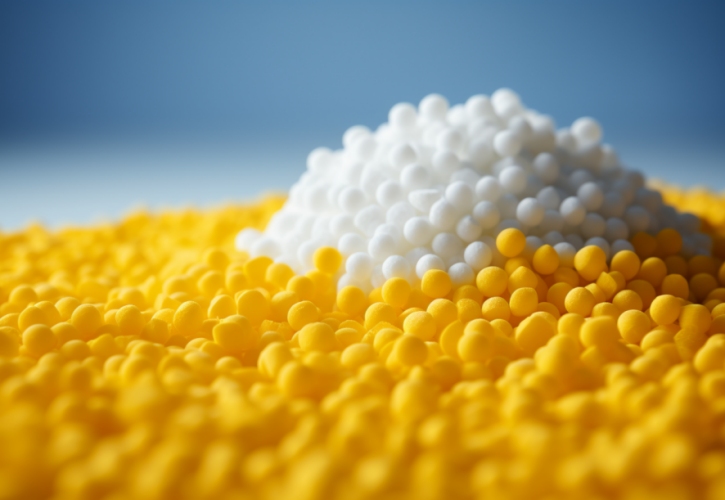Vulcanization accelerators are essential chemicals in the rubber industry, used to speed up the vulcanization process. This process, which involves the cross-linking of rubber molecules, is crucial for enhancing the strength, elasticity, and durability of rubber products. Vulcanization Accelerator Masterbatch refers to a pre-dispersed blend of vulcanization accelerators mixed with a carrier material, usually in the form of a granular or powder product, making it easier to handle, store, and incorporate into rubber compounds.

1. The Role in Rubber Production
In rubber production, the vulcanization process involves heating rubber with sulfur, which forms cross-links between the polymer chains. However, without the right additives, the process would take too long, resulting in inefficient production. This is where vulcanization accelerators come in—they significantly reduce vulcanization time, increase processing speed, and allow manufacturers to control the final properties of the rubber, such as hardness, resilience, and flexibility.
Accelerators also help reduce the amount of sulfur required, leading to cost savings and improved product quality. By using vulcanization accelerator masterbatches, rubber manufacturers can achieve more uniform dispersion of accelerators within the compound, ensuring more consistent vulcanization results and better mechanical properties in the final product.
2. Various Types of Vulcanization Accelerators
Vulcanization accelerators are crucial for speeding up the vulcanization process of rubber. Different types of accelerators serve various purposes depending on the rubber composition and desired properties.
Below are some common types of vulcanization accelerators:
Thiurams
Thiurams are a group of accelerators that enhance the curing process by providing good scorch safety.
They are commonly used in rubber compounds that require long working times. Thiurams are particularly effective in promoting high-speed vulcanization while maintaining low sulfur consumption.
Thiazoles
Thiazole accelerators are one of the most widely used types.
They offer a balanced cure rate and excellent mechanical properties. These accelerators are effective at relatively low temperatures and improve the aging resistance and dynamic properties of rubber products.
Sulfenamides
Sulfenamide accelerators are known for their excellent processing safety and superior scorch resistance.
They are commonly used in high-performance rubber applications like tires. These accelerators allow for more control over the curing process and enhance the overall strength of the rubber.
Dithiocarbamates
Dithiocarbamate accelerators help to enhance the processing of rubber and improve its resistance to heat and aging.
They are often combined with other accelerators to achieve a balanced curing rate and improved elasticity.
Thioureas
Thiourea-based accelerators provide faster vulcanization, making them ideal for high-production environments.
These accelerators are known for their excellent compatibility with various rubbers and their ability to improve the resilience of rubber products.
Guanidines
Guanidine accelerators are used to enhance the curing speed in rubber, especially in high-temperature applications.
They contribute to the overall strength and durability of rubber, making them suitable for tires and industrial rubber goods.
Adhesion Agents
Adhesion agents play a crucial role in improving the adhesion between rubber and other materials, such as steel cords in tires.
They are essential in ensuring the bonding strength and durability of rubber-based products.
Vulcanizers
Vulcanizers, such as sulfur, are substances that initiate the vulcanization process, providing the necessary cross-linking in rubber.
While sulfur is the most common vulcanizer, other compounds can be used depending on the rubber type and required properties.

3. How Are Vulcanization Accelerators Made?
The production of vulcanization accelerators typically involves several stages. Initially, the active ingredient, usually a chemical compound that can undergo reactions to form cross-links, is synthesized. This compound is then mixed with a carrier resin to create a masterbatch. The carrier resin helps in the even distribution of the accelerator during the mixing process in rubber compounding, reducing the risk of uneven vulcanization and product defects.
The masterbatch is made by dissolving or dispersing the accelerator into a polymer matrix, which is then granulated or powdered for easy use in rubber manufacturing. The quality of the masterbatch depends on the accuracy of dispersion and the consistency of the compound. Advances in production techniques have led to improved masterbatch formulations, which allow for better control over the speed of vulcanization and the final properties of the rubber.
4. Benefits of Adopting Vulcanization Accelerator Masterbatch
There are several key benefits to adopting vulcanization accelerator masterbatch over traditional powdered or liquid accelerators:
-
Better Dispersion: The pre-dispersed nature of masterbatch ensures a more even distribution of accelerators in the rubber compound. This results in more uniform vulcanization, which leads to improved product consistency and quality.
-
Simplified Handling: Vulcanization accelerator masterbatches are easier to handle than powders or liquids. The solid form reduces dust, making it safer for workers and more convenient for storage and transportation.
-
Improved Product Quality: By ensuring the accelerators are evenly mixed into the compound, the masterbatch improves the uniformity of the vulcanization process. This leads to better mechanical properties like tensile strength, tear resistance, and resilience in the final rubber product.
-
Time and Cost Efficiency: Vulcanization accelerator masterbatch can reduce the amount of time spent on mixing and handling the accelerators. This, in turn, reduces production costs and energy consumption, while speeding up the overall rubber manufacturing process.
-
Environmentally Friendly: Using vulcanization accelerator masterbatch can also help reduce the amount of hazardous dust in the working environment, improving the health and safety conditions in the factory.
Conclusion
Vulcanization accelerator masterbatch plays a vital role in modern rubber manufacturing by improving the efficiency of the vulcanization process and the quality of the final product. With various types of accelerators available for different applications, manufacturers can tailor the vulcanization process to suit their needs. The benefits of adopting vulcanization accelerator masterbatch, including better dispersion, simplified handling, and improved product consistency, make it a valuable investment for rubber producers looking to improve their production capabilities and product quality.
Choosing the right vulcanization accelerator masterbatch is essential for achieving the desired rubber properties and ensuring cost-effective and efficient production. Whether you are involved in tire manufacturing, industrial rubber products, or consumer goods, understanding the role of accelerators in the vulcanization process is crucial for optimizing your production processes and meeting market demands.
 cwc@jxbh-masterbatch.com
cwc@jxbh-masterbatch.com Jiaxing Beihua Polymer Auxiliaries Co., Ltd. / Shanghai Crystal Wells Chemical New Materials Co., Ltd.
Jiaxing Beihua Polymer Auxiliaries Co., Ltd. / Shanghai Crystal Wells Chemical New Materials Co., Ltd.
































